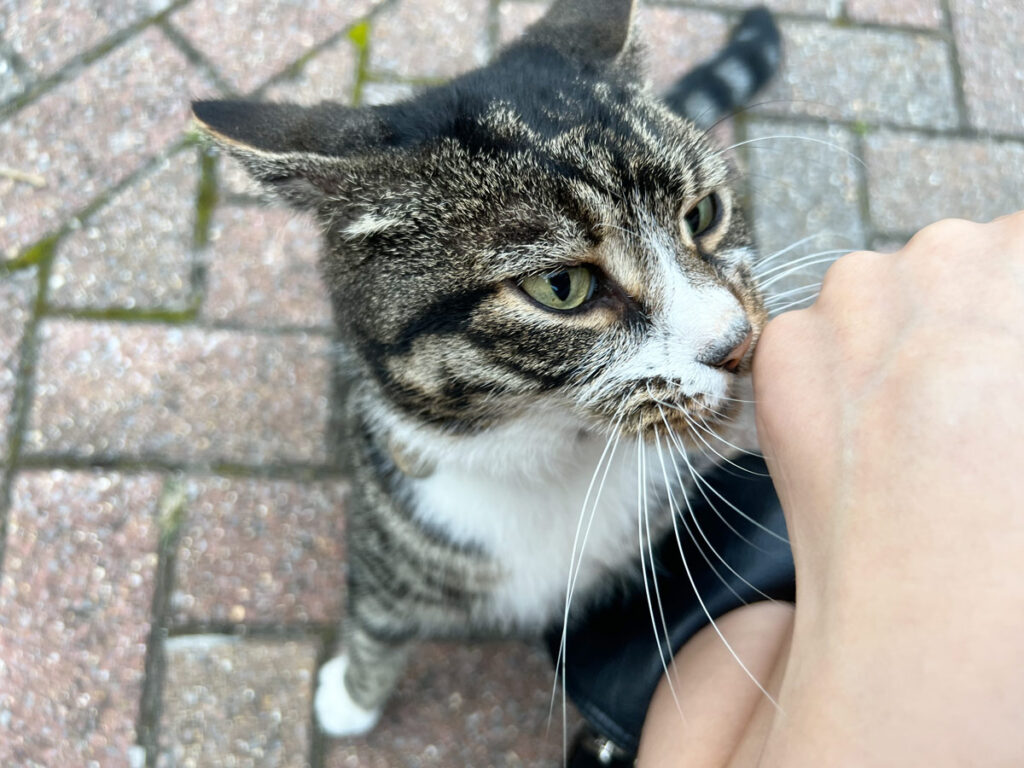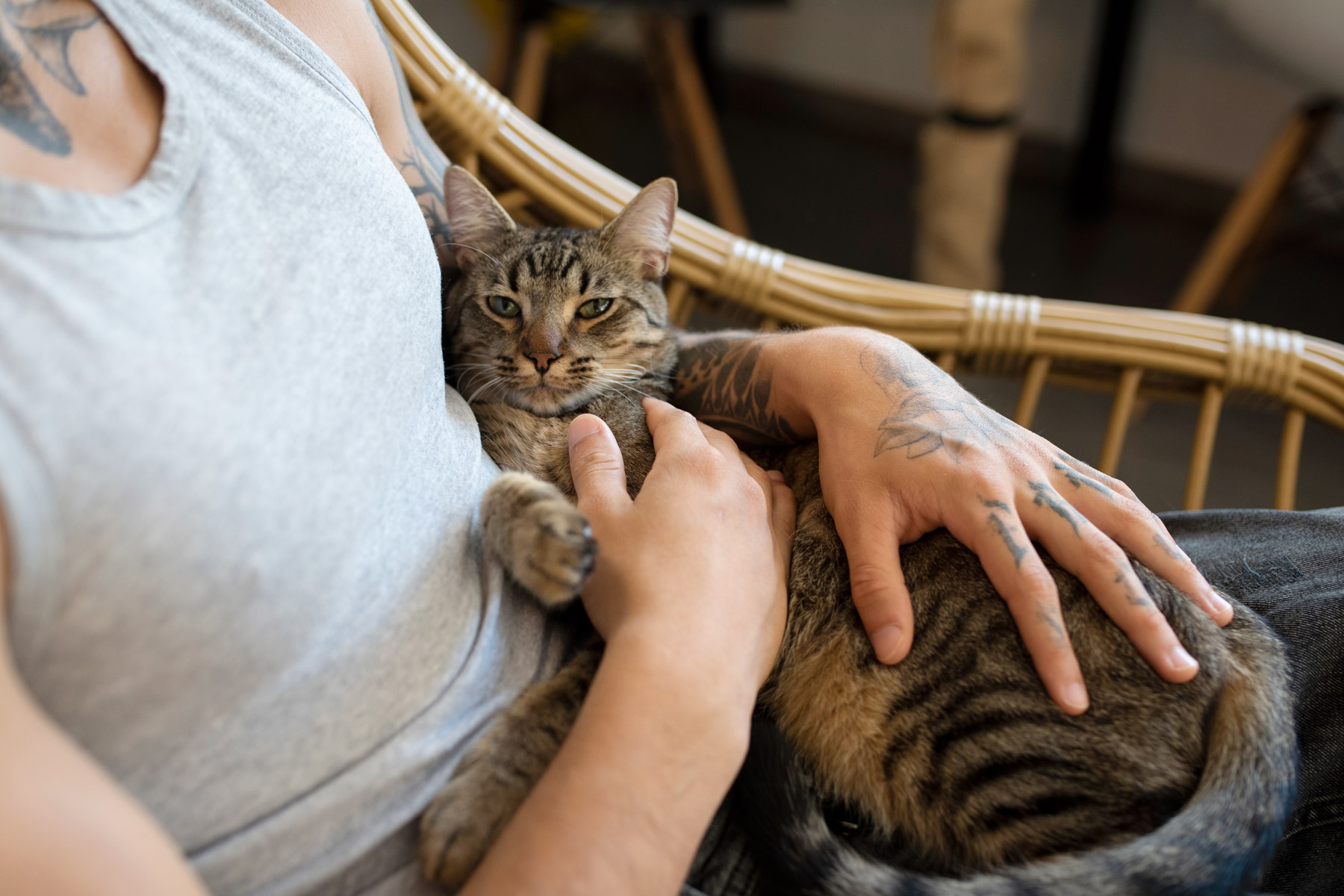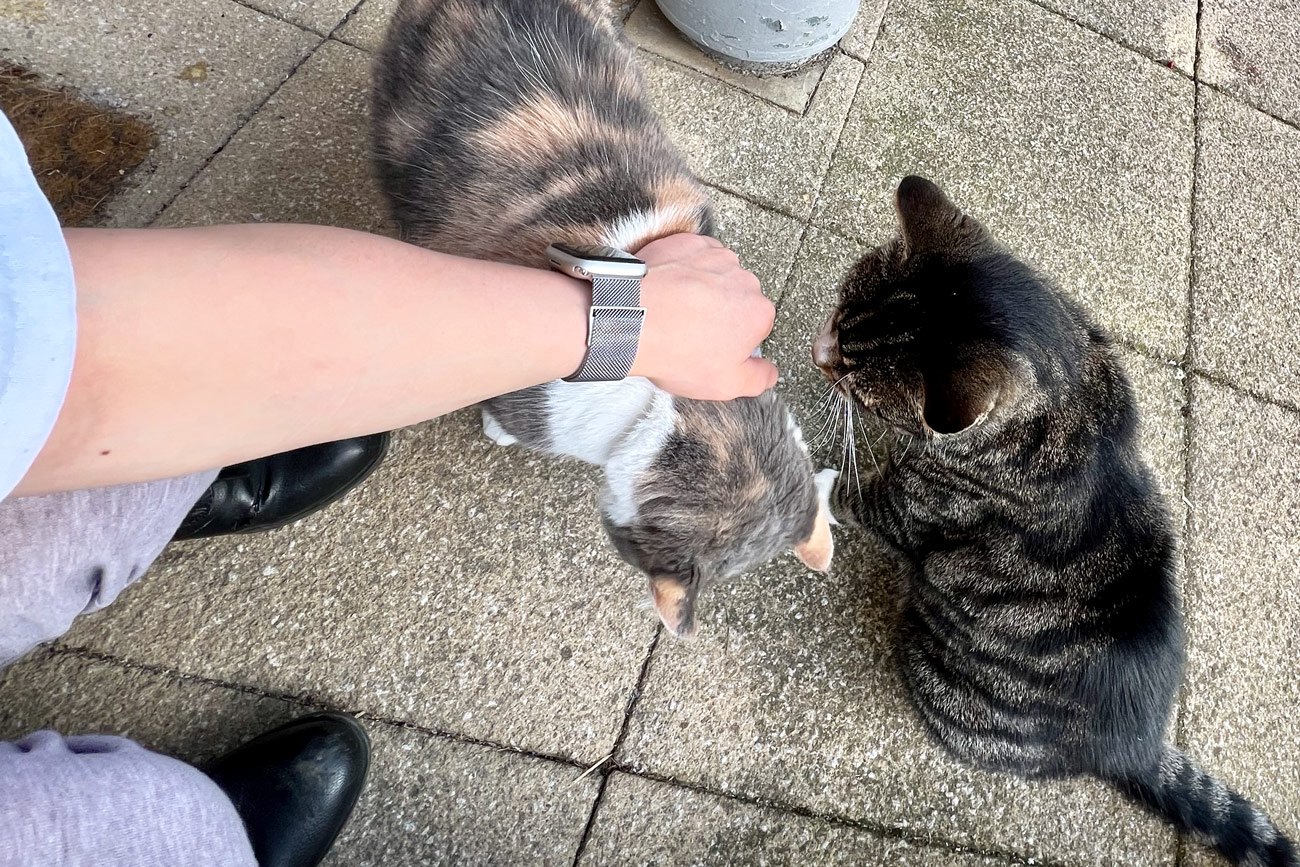Have you ever wondered why some people seem to have an almost magnetic connection with cats? I’ve often heard phrases like, “My cat doesn’t usually like strangers, but they love you!” While I take this as a heartfelt compliment, I believe there’s more to it than just luck. Let’s explore the psychology behind why cats gravitate toward certain people and the methods I use to build meaningful connections with even the shyest or most reserved felines.
1. Sensitivity and Emotional Awareness
One of the key reasons I believe cats seem so comfortable around me is my ability to tune into their subtle cues and emotions. Cats are masters of nonverbal communication – expressing themselves through body language, movements, and even the flick of a tail. I’ve developed a natural sensitivity to these signals, which allows me to understand when a cat is curious, nervous, or in need of reassurance.
This sensitivity also extends to recognizing how cats perceive human emotions. Studies show that cats can distinguish between feelings like happiness and anger by observing our facial expressions and tone of voice. By staying attuned to these dynamics, I’ve learned how to communicate in ways that foster trust and comfort.
For example:
- Calming signals: Using a soft tone or slow blinking mirrors feline-friendly communication, signalling that I’m not a threat.
- Body language cues: Lowering myself to their level or moving gently reduces any perceived danger, aligning with the psychological principle of mirroring to build rapport
- Pausing before reaching out: Instead of immediately petting or interacting, I let the cat sniff my hand first. This simple act respects their personal space and mimics natural feline greetings, helping to build trust
- Matching energy levels: Cats appreciate interactions that align with their current mood. For instance, I engage in energetic play with a lively cat but remain still and quiet when dealing with a timid or sleepy one
- Being predictable: Avoiding sudden movements or changes in behaviour ensures I don’t startle the cat. If I need to stand or move, I do so slowly and deliberately, giving them time to adjust
This attentiveness allows me to adapt to each cat’s unique personality, creating a safe and understanding environment where they feel valued and at ease. Whether it’s offering a quiet presence or giving them space to explore, I tune in to what they’re telling me without words.
2. Respecting Boundaries
Cats are independent creatures who value their personal space, a trait rooted in their evolutionary history as solitary hunters. Rather than rushing to pet or pick them up, I allow the cat to approach me on their terms. I never force interactions, and this patience often earns their trust. Cats seem to appreciate when their autonomy is respected, making them more likely to form a bond with someone who honours their boundaries.
Research on animal behaviour emphasizes that forcing interactions with cats can lead to stress and avoidance. By contrast, respecting their need for space helps create a sense of security, which is key to building a positive relationship. This approach aligns with self-determination theory, a psychological framework suggesting that fostering a sense of control and choice enhances trust and well-being in relationships – whether human or feline. By empowering cats to decide when and how they interact, I create an environment where they feel safe, respected, and understood.

3. Calm and Gentle Energy
Cats are highly perceptive creatures, finely attuned to the energy and emotions around them. I’ve found that maintaining a calm, relaxed environment is crucial for helping them feel safe and at ease. Whether I’m meeting a shy cat who needs reassurance or a playful one bursting with energy, I approach them with a quiet, non-intrusive energy that lets them feel safe in my presence.
Research published in Animal Cognition found that cats can mirror their human companions’ emotional states, responding to stress or calmness in their environment. This aligns with the principle of emotional contagion, which suggests that emotions and energy levels can be transmitted between individuals. When I stay calm, cats naturally reflect that tranquility, allowing them to lower their defences and feel secure. This approach is especially effective in stressful situations, such as when a cat is adjusting to a new sitter or environment. By grounding my energy and avoiding sudden movements or loud noises, I create a soothing atmosphere where the cat feels they can relax and explore at their own pace.
4. Building Trust Through Routine
Consistency is essential when it comes to building trust with cats. As a cat sitter, I make sure to follow their established routines – feeding them at the usual times, sticking to their preferred play schedules, and respecting their favourite spots to nap or relax.
Routines offer predictability, which helps reduce anxiety and gives cats a sense of control over their environment. This predictability creates a stable atmosphere, helping them feel secure and reinforcing their trust in me. By honouring their routines, I show that I understand their needs and respect their boundaries, fostering a deeper bond.
5. Playing and Engaging on Their Terms
Playtime is one of the best ways to connect with a cat, but it’s important to let them take the lead. I always observe what type of play they enjoy –whether it’s chasing a feather wand, pouncing on a toy mouse, or simply exploring their surroundings. By following their cues and preferences, I create a fun, relaxed atmosphere where they feel in control.
These moments of shared play help create positive associations, deepening our bond and reinforcing my role as a source of enjoyment. Additionally, play fulfills their psychological need for mental stimulation, keeping them engaged and content. When cats enjoy themselves on their terms, it strengthens the trust and connection we share.
6. Deep Love and Understanding of Cats
Beyond all the techniques and strategies, I believe cats have a unique ability to sense when someone genuinely loves and understands them. My lifelong fascination with cats and my strong desire to care for them have helped me develop a deep connection with them. They seem to intuitively know that I’m there to prioritize their well-being and make their time away from their owners as stress-free as possible.
Research on human-animal bonds supports the idea that empathy strengthens trust and connection. This aligns with attachment theory, which emphasizes the role of consistent and empathetic caregiving in forming secure, lasting bonds. When a cat senses genuine care and affection, it fosters a sense of safety and emotional security, allowing them to trust and form a strong bond with their caregiver.
Cats have their own unique ways of showing affection, and earning their trust is always a rewarding experience. My success as a cat sitter comes down to patience, emotional awareness, and a genuine love for these incredible animals.
If you’re looking to strengthen your bond with your own cat, or wondering why they seem to favour certain people – remember that the key lies in understanding their psychological needs. Sensitivity, respect for boundaries, a calm and consistent energy, and a caring approach can work wonders in earning their trust and creating a lasting bond.
Lyra and Smithy, The Creative Cat Sitter



